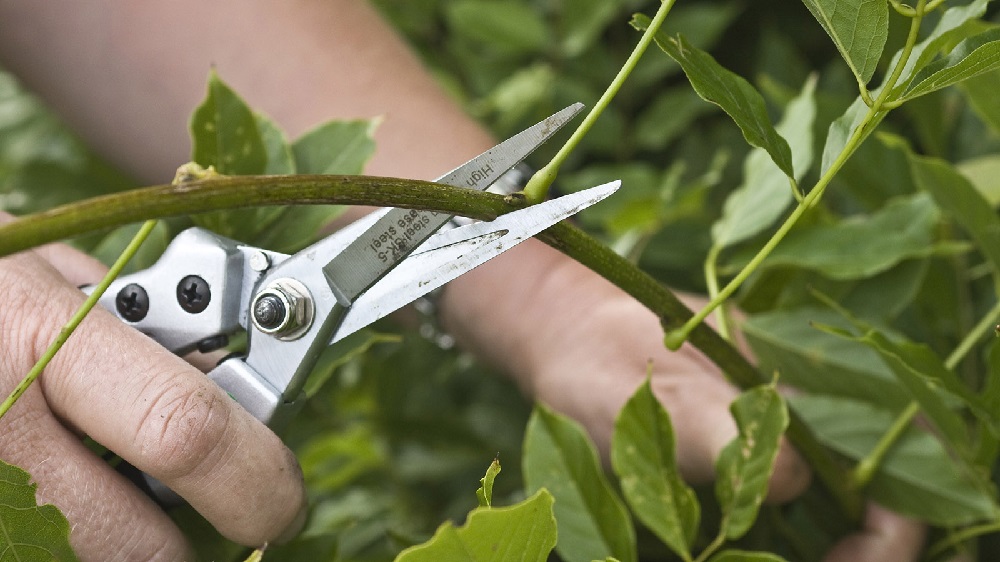Tree Pruning Dos and Don’ts: 5 Common Mistakes to Avoid

Pruning is essential for the health and beauty of your trees. It can help young trees grow, prevent decay, and give your tree an excellent-looking structure. Proper pruning can offer trees several benefits such as increasing flowering, and fruit production, promoting healthy new growth, increasing sunlight and air circulation, and maintaining a desired shape and/or size.
Pruning can also improve traffic and pedestrian flow, ensure a clear view of road signs, reduce the occurrence of leaf disease, effectively address some of the safety risks caused by weakened or damaged limbs, and reduce the presence of excess shade which can impede the growth of other plant life around the tree such as grass and/or shrubbery.
Using Dirty, Blunt Tools
Using dirty, blunt tools can cause damage to your trees and plants. Dirty tools can spread disease and fungus from one plant to another. Blunt tools can cause damage to the tree or plant by tearing the bark instead of making a clean cut. This can lead to an increased risk of disease and pests.
To avoid using dirty tools, make sure you clean your tools after each use with a disinfectant solution. This will help prevent the spread of disease and fungus. To avoid using blunt tools, make sure you sharpen your tools regularly. This will help ensure that you make clean cuts that are less likely to cause damage to your trees and plants.
Pruning at the Wrong Time
Over-pruning can cause damage to your trees and plants. Over-pruning can lead to a weakened tree or plant that is more susceptible to disease and pests. Over-pruning can also lead to a lack of fruit or flowers.
To avoid over-pruning, make sure you only remove the necessary amount of branches and leaves. You should never remove more than 25% of the tree or plant in one year. You should also make sure you prune at the right time of year and use clean, sharp tools.
Ignoring Disease and Dieback
Ignoring disease and dieback can cause damage to your trees and plants. If you ignore signs of disease or dieback when pruning, even if only a small area of the tree or shrub is affected, it is likely to spread and may eventually kill the plant. To avoid ignoring disease and dieback, make sure you inspect your trees and plants regularly. You should look for signs of disease or dieback such as yellowing leaves or dead branches. If you notice any signs of disease or dieback, make sure you remove the affected area immediately.
Removing Too Much Wood
Removing too much wood can cause damage to your trees and plants. If you remove too much wood, it can weaken the tree or plant and make it more susceptible to disease and pests.
To avoid removing too much wood, make sure you only remove the necessary amount of branches and leaves. You should never remove more than 25% of the tree or plant in one year. You should also make sure you prune at the right time of year and use clean, sharp tools.
Neglecting Pruning for Several Seasons
Neglecting pruning for several seasons can cause damage to your trees and plants. Neglecting pruning can lead to a lack of sunlight and air circulation which can cause disease and pests. Neglecting pruning can also lead to a lack of fruit or flowers. To avoid neglecting pruning for several seasons, make sure you prune your trees and plants regularly. You should prune your trees and plants at least once a year. You should also make sure you prune at the right time of year and use clean, sharp tools.
Conclusion
Tree Pruning is an important part of maintaining healthy trees and plants. By avoiding these common mistakes, you can help ensure that your trees and plants stay healthy and produce fruit or flowers. If you are not able to DIY, you can consider a professional tree pruning service to help you avoid all of the trouble.

The author, Dr. David K Simson is a trained radiation oncologist specializing in advanced radiation techniques such as intensity-modulated radiotherapy (IMRT), image-guided radiotherapy (IGRT), volumetric modulated arc therapy (VMAT) / Rapid Arc, stereotactic body radiotherapy (SBRT), stereotactic radiotherapy (SRT), stereotactic radiosurgery (SRS). He is also experienced in interstitial, intracavitary, and intraluminal brachytherapy.








